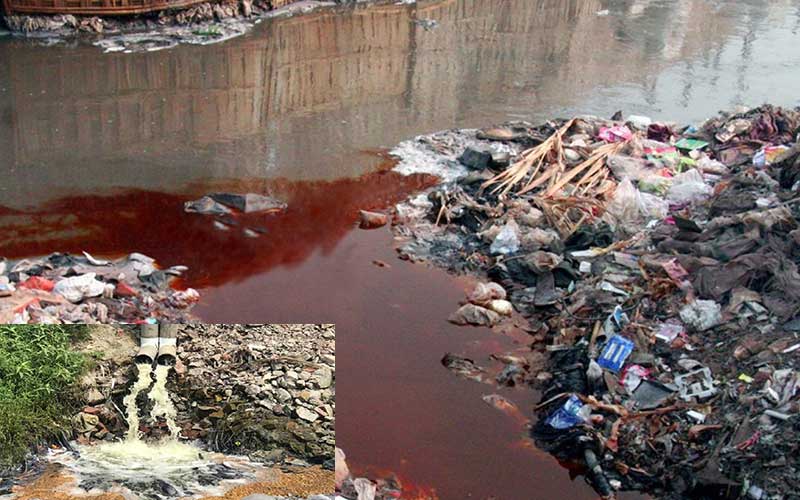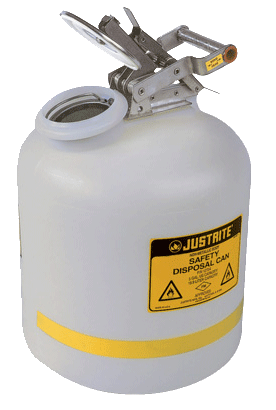Industrial Wastewater Treatment: Customized Solutions for Complex Wastewater Challenges
Industrial Wastewater Treatment: Customized Solutions for Complex Wastewater Challenges
Blog Article
Just How Liquid Waste Disposal Functions: A Detailed Review of Strategies and Technologies Used

Summary of Fluid Waste Kind
The intricacy of fluid waste kinds requires a complete understanding of their attributes and ramifications for disposal. Fluid waste can broadly be categorized into a number of types, including industrial, local, agricultural, and contaminated materials. Each group exhibits distinctive properties, calling for details administration techniques to minimize ecological and health and wellness dangers.
Industrial fluid waste stems from making procedures and commonly includes a range of contaminants, such as heavy metals, solvents, and natural compounds. Municipal liquid waste, primarily consisting of wastewater from families and industrial facilities, has raw material, nutrients, and virus (industrial wastewater treatment). Agricultural liquid waste, including drainage from farms, may consist of fertilizers, chemicals, and pet waste, posturing dangers to water quality and ecosystems
Unsafe liquid waste is defined by its poisoning, reactivity, or possible to create harm. Comprehending these varied liquid waste types is critical for developing efficient disposal techniques and ensuring conformity with ecological laws.
Physical Treatment Methods

Screening is the preliminary action, where larger particles and particles are gotten rid of from the liquid waste using screens or grates. This process protects downstream tools from damages and makes certain smoother procedure. Adhering to testing, sedimentation uses gravitational force to separate solids from fluids. In sedimentation containers, larger bits work out at the bottom, creating a sludge layer, while the cleared up fluid can be additional treated.
Filtering is another vital technique that entails passing the fluid through permeable materials, such as sand or membranes, to capture smaller sized bits. This action improves the quality of the fluid, making it appropriate for subsequent therapy processes.

Chemical Therapy Techniques
Chemical therapy techniques are crucial for effectively taking care of liquid waste, specifically in dealing with liquified and colloidal contaminants that physical methods might not effectively remove. These methods utilize different chemical agents to neutralize, speed up, or change dangerous compounds right into less hazardous kinds.
One common technique is coagulation and flocculation, where chemicals such as alum or ferric chloride are contributed to advertise the aggregation of suspended bits. This procedure boosts sedimentation, permitting much easier removal of the resulting sludge. In addition, oxidation processes, employing representatives like chlorine or ozone, are used to break down intricate organic compounds and microorganisms, making the waste safer for discharge or further treatment.
Neutralization is an additional crucial method, which readjusts the pH of acidic or alkaline waste streams to neutral degrees, preventing potential harm to downstream systems and the environment. Additionally, advanced oxidation processes (AOPs) use mixes of oxidants and ultraviolet light to break down consistent contaminants, achieving a higher degree of treatment performance.
Organic Therapy Processes
Biological treatment processes play a vital duty in the monitoring of liquid waste by making use of microbes to decay natural issue and lower impurity degrees. These procedures can be generally categorized right into cardiovascular and anaerobic therapies, each utilizing certain microbial neighborhoods to accomplish effective waste degradation.
Cardio therapy includes using oxygen to help with the break down of organic materials by germs. This process is commonly applied in turned on sludge systems, where aeration tanks give a conducive environment for microbial growth, bring about the oxidation of natural pollutants. The resultant biomass can be divided from treated effluent via sedimentation.
On the other hand, anaerobic treatment takes place in the absence of oxygen, relying upon various bacteria to damage down raw material. This approach is particularly helpful for high-strength waste, as it generates biogas, a renewable resource source, while reducing sludge manufacturing. Technologies such as anaerobic digesters are regularly utilized in industrial and metropolitan applications.
Both cardiovascular and anaerobic biological therapies not only decrease the environmental influence of liquid waste but additionally assist in resource healing, making them important parts of sustainable waste management approaches. Their performance, versatility, and efficiency sustain their prevalent application throughout numerous sectors.
Emerging Technologies in Disposal
Cutting-edge approaches to fluid waste disposal are quickly advancing, driven by advancements in innovation and a raising focus click this on sustainability. Amongst these arising technologies, membrane bioreactors (MBRs) have gotten grip for their ability to incorporate organic therapy with membrane layer filtration, resulting in top notch effluent that can be reused in different applications. MBRs allow smaller sized impacts and extra reliable procedures compared to standard systems.
One more appealing advancement is making use of anaerobic food digestion integrated with nutrient recovery technologies, which not only treats fluid waste yet additionally generates biogas and recuperates useful nutrients like nitrogen and phosphorus. This double benefit enhances resource efficiency and reduces ecological impact.
Additionally, progressed oxidation procedures (AOPs) are being taken on for the destruction of complicated organic contaminants. These methods make use of effective oxidants and drivers to break down contaminants at the industrial wastewater treatment solutions molecular level, supplying an extremely reliable solution for tough waste streams.
Additionally, the combination of expert system and artificial intelligence in waste administration systems is optimizing functional effectiveness and predictive upkeep, causing lowered prices and enhanced environmental conformity. These innovations mirror a significant shift in the direction of more lasting and efficient fluid waste disposal practices.
Verdict
In final thought, reliable liquid garbage disposal requires a thorough understanding of numerous strategies and modern technologies. The assimilation of physical, chemical, and organic therapy techniques guarantees the reliable management of varied waste types. Furthermore, the appearance of innovative modern technologies enhances therapy efficiency and promotes sustainability in waste management techniques. By continuously progressing these techniques, it ends up being feasible to address the expanding difficulties connected with liquid waste, eventually adding to environmental protection and resource healing.
Liquid waste disposal is an essential aspect of environmental management, calling for a comprehensive understanding of various techniques and innovations tailored to different waste types. Fluid waste can generally be categorized into several types, including commercial, municipal, farming, and hazardous waste. Agricultural fluid waste, consisting of drainage from ranches, may consist of plant foods, pesticides, and animal waste, positioning risks to water quality and ecosystems.
Various physical treatment my site approaches play a critical duty in taking care of fluid waste effectively - industrial wastewater treatment.In conclusion, reliable fluid waste disposal requires an extensive understanding of various techniques and technologies
Report this page